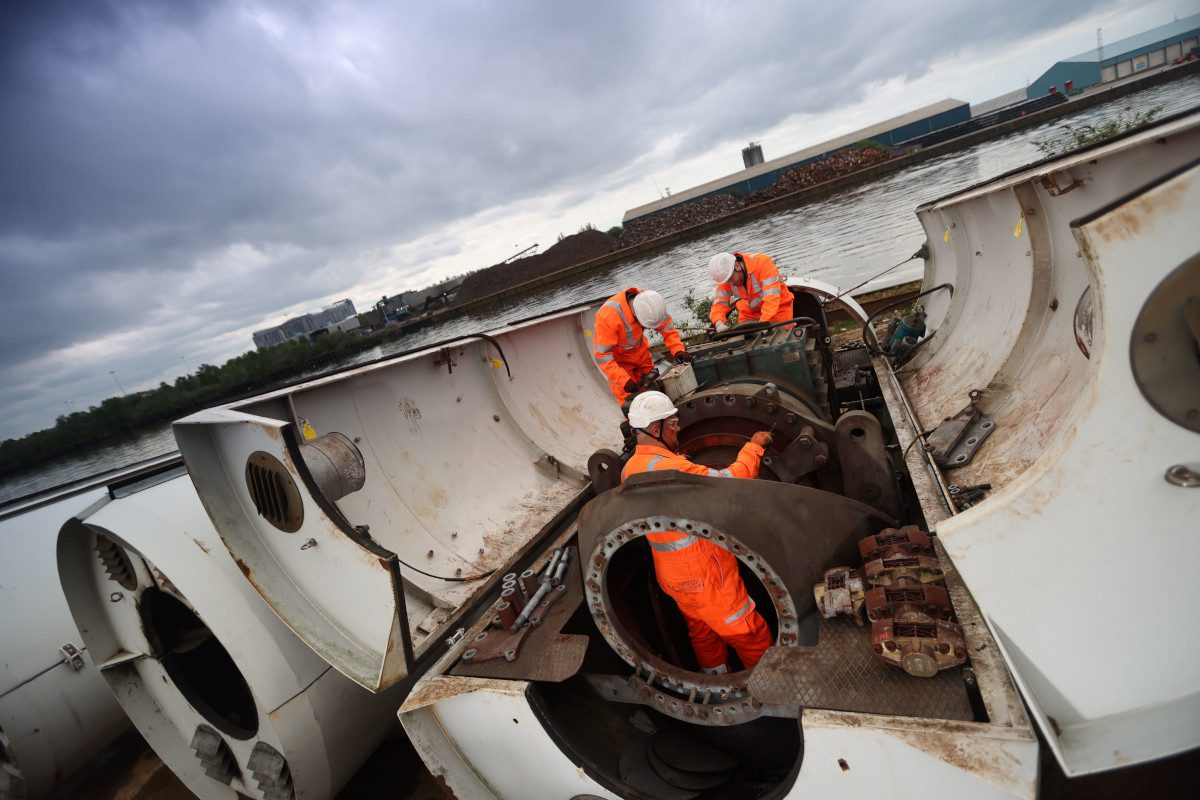
Resource recovery firm EMR writes
As asset owners, energy companies and policymakers in the UK energy market are busy deliberating over how we deliver the ambitious Clean Power 2030 (CP30) targets, including a doubling of UK onshore wind capacity by 2030, ‘repowering’ has emerged as a crucial part of the solution.
Repowering wind turbines means upgrading or replacing older wind turbines with new technology to increase their efficiency, reliability, and energy output. It can involve replacing key components such as blades, gearboxes, and generators, or removing older turbines entirely and installing modern, higher-capacity models.
We know that meeting these Clean Power targets won’t be easy. Recent industry studies have highlighted significant challenges in rolling out new onshore wind capability, resulting from planning and permitting delays, grid connection queues, and rising project costs [iii].
Renewables Obligation Scheme
Furthermore, despite the increasing operating costs that come with age, the UK’s oldest (and smallest) assets continue to be financially attractive to run. This is both due to payments from the high wholesale electricity price and the Renewables Obligation (RO) scheme. The RO scheme is a UK government policy mechanism, set up just after the turn of the millennium, that incentivises the generation of electricity from renewables.
However, early entrants to the RO will see their payments ending in 2027. This means that the first wind farms to be erected are now facing a decision point about their future financial viability.
Thousands of turbines may end up being decommissioned, just as these ambitious targets kick in. Industry bodies estimate that, without a deliverable plan for replacement, as much as 9GW of the UK’s total onshore wind capacity could be lost by 2040 as older wind farms reach the end of their viable operating lives [iii].
Instead of being a cliff edge, the ending of the RO should be the catalyst for a strategic and coordinated campaign to maximise the benefits of repowering. There have been recent calls for the UK Government’s new publicly owned energy company, Great British Energy, to acquire ageing assets at a discounted rate and reap the benefits of repowering them [iv]. The Institute for Public Policy Research calculates that such a move – alongside the investment in green energy already promised at the last election – could deliver up to 5% of the UK’s energy needs by the early 2030s, making a tangible, timely and very positive difference to consumers’ bills.
Early wind farms were commonly located in some of the best locations for wind energy, so focussing repowering efforts here would maximise impact. In fact, data from Europe shows that replacing decades-old assets with the latest technology can reduce the number of turbines in a wind farm by a quarter, while tripling electricity production – accelerating the transition to more renewables at a lower cost [v].
Circular economy
A national campaign of renewal also needs to be supported by a UK-based circular economy solution to make decommissioned wind turbines available for reuse, remanufacturing and recycling. At EMR, we have been working hard to deliver just such a circular economy – based at our Wind Turbine Processing Centre in Glasgow.
By efficiently dismantling and rigorously testing each asset that arrives on site, EMR teams manage the resources in the most efficient way – whether that be through reusing parts or recycling materials for the next generation of turbines.
EMR has also been working with HyProMag, the Offshore Renewable Energy (ORE) Catapult, Magnomatics, and University of Birmingham to help deliver a scaled-up circular supply chain for the rare-earth metals (including neodymium or NdFeB magnets) found in the motors of larger assets.
Having a sustainable circular supply chain for decommissioned wind turbines, and policymakers who back the transition to green energy directly, puts the UK in a great position to make repowering both sustainable and affordable for all.
At EMR, we’re proud that our expertise, investment, and innovation lies at the heart of this opportunity. And we’re only just getting started.
Notes
[i] Regen (2025) Investability and Scottish wind, https://www.regen.co.uk/publications/investability-and-scottish-wind/
[ii] Biggar Economics (2024) Onshore wind finance, https://biggareconomics.co.uk/category/renewables/onshore-wind-finance
[iii] Renewable UK, Scottish Renewables, and Energy UK (2023) Repowering and onshore wind, https://www.energy-uk.org.uk/wp-content/uploads/2023/03/Repowering_Onshore_Wind.pdf
[iv] The Institute For Public Policy Research (2025) 2030 and beyond: Great British Energy’s role in the green transition, https://www.ippr.org/articles/2030-and-beyond
[V] Wind Europe (2024) Europe not yet reaping the benefits of repowering old wind farms, https://windeurope.org/newsroom/press-releases/europe-not-yet-reaping-the-benefits-of-repowering-old-wind-farms/




